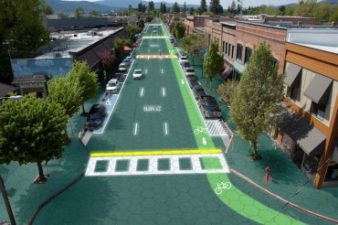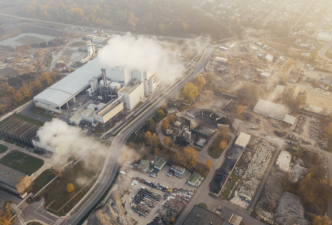The United Arab Emirates has one of the largest carbon footprints in the world. Not surprising considering the small country has an indoor ski hill in the middle of the desert and a number of other Las Vegas-esque attractions (like the IceLand waterpark), but the government has said enough. A new high-tech plan was announced on Sunday that could see the UAE’s daily electric power consumption reduced by 30 percent, the government said.
According to Gulf News, 70 percent of an estimated 56.6 terrawatts of power used in the gulf emirates is used for cooling and lighting. This, when coupled with water usage, makes the UAE a leader in carbon emissions.
Minister of Environment and Water Rashid Ahmad Bin Fahd joined with mobile operator Etisalat and Pacific Control Systems at Dubai’s annual Gitex Technology Week to unveil Emirates Energy Star, a program that “monitors energy use in buildings in real-time via telecom infrastructure from a command center in Dubai.”
Bin Fahd said the launch of the program “was a big step toward a greener tomorrow for the UAE.”
“This is a big advancement and will help reduce our carbon footprint,” Bin Fahd told Gulf News in an exclusive interview. “Technology is a very big tool to make this project work. It’s another big day, a good day for the environment in the UAE.”
However, despite the nice overtures, others are not convinced. Ahmed bin Hamza, an environmental expert and former government consultant, told Bikya Masr via telephone that at this point, “it is simply lip service to the world that the UAE is looking to get better.”
He argued that what is needed is actual implementation of these sort of efforts to create a new perspective that is based on reduction “rather than band-aiding things.”
One of the solutions he believes would be vital to the Emirates success on green initiatives would be to force new construction to fit what he called “eco-effective practices that do more than reduce, they create a new method of thinking that could see the country move to the top of the green revolution.”
But it’s not happening now, he said. Bin Hamza added that Dubai is the main culprit, with their manmade islands and spectacular attractions. “This in-your-face grandioso has to end and we have to build great buildings with cool things, but while maintaining the goal of being environmentally sustainable.”
This is the crux of the matter, officials and experts say. According to government statistics, some 70 percent of power output goes to buildings, making it difficult to put pressure on people to change their daily routine.
“We can’t because they aren’t the problem. The problem is the construction itself,” said William Evans, a British executive at a top Dubai corporation. “It is extremely hot here and if we are going to reduce our carbon footprint there has to be solutions we are not seeing.”
Read through Green Prophet’s United Arab Emirates section (here) for more green news on the UAE
(Reprinted from Bikya Masr)
Image via wheatfields




